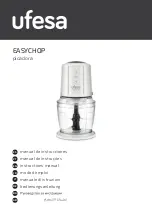
Serial Host Interface
Characteristics Of The SPI Bus
MOTOROLA
DSP56012 User’s Manual
5-19
5.4.6.18
HCSR Host Busy (HBUSY)—Bit 22
The read-only status bit Host Busy (HBUSY) indicates that the I
2
C bus is busy (when
in the I
2
C mode) or that the SHI itself is busy (when in the SPI mode). When
operating in the I
2
C mode, HBUSY is set after the SHI detects a Start event and
remains set until a Stop event is detected. When operating in the Slave SPI mode,
HBUSY is set while SS is asserted. When operating in the Master SPI mode, HBUSY is
set if the HTX register is not empty or if the IOSR is not empty. HBUSY is cleared
otherwise. HBUSY is cleared by hardware reset, software reset, SHI individual reset,
and during the Stop state.
5.5
CHARACTERISTICS OF THE SPI BUS
The SPI bus consists of two serial data lines (MISO and MOSI), a clock line (SCK),
and a Slave Select line (SS).During an SPI transfer, a byte is shifted out one data pin
while a different byte is simultaneously shifted in through a second data pin. It can
be viewed as two 8-bit shift registers connected together in a circular manner, where
one shift register is located on the master side and the other on the slave side. Thus
the data bytes in the master device and slave device are effectively exchanged. The
MISO and MOSI data pins are used for transmitting and receiving serial data. When
the SPI is configured as a master, MISO is the master data input line, and MOSI is the
master data output line. When the SPI is configured as a slave device, these pins
reverse roles.
Clock control logic allows a selection of clock polarity and a choice of two
fundamentally different clocking protocols to accommodate most available
synchronous serial peripheral devices. When the SPI is configured as a master, the
control bits in the HCKR select the appropriate clock rate, as well as the desired clock
polarity and phase format (see
Figure 5-6
on page 5-10).
The SS line allows individual selection of a slave SPI device; slave devices that are not
selected do not interfere with SPI bus activity (i.e., they keep their MISO output pin
in the high-impedance state). When the SHI is configured as an SPI master device,
the SS line should be held high. If the SS line is driven low when the SHI is in SPI
Master mode, a bus error will be generated (the HCSR HBER bit will be set).
Summary of Contents for DSP56012
Page 12: ...xii Motorola ...
Page 20: ...xx Motorola ...
Page 21: ...MOTOROLA DSP56012 User s Manual 1 1 SECTION 1 OVERVIEW ...
Page 40: ...1 20 DSP56012 User s Manual MOTOROLA Overview DSP56012 Architectural Overview ...
Page 41: ...MOTOROLA DSP56012 User s Manual 2 1 SECTION 2 SIGNAL DESCRIPTIONS ...
Page 61: ...SECTION 3 MEMORY OPERATING MODES AND INTERRUPTS ...
Page 81: ...MOTOROLA DSP56012 User s Manual 4 1 SECTION 4 PARALLEL HOST INTERFACE ...
Page 148: ...4 68 DSP56012 User s Manual MOTOROLA Parallel Host Interface Host Interface HI ...
Page 149: ...MOTOROLA DSP56012 User s Manual 5 1 SECTION 5 SERIAL HOST INTERFACE ...
Page 179: ...MOTOROLA DSP56012 User s Manual 6 1 SECTION 6 SERIAL AUDIO INTERFACE ...
Page 205: ...MOTOROLA DSP56012 User s Manual 7 1 SECTION 7 GPIO ...
Page 210: ...7 6 DSP56012 User s Manual MOTOROLA GPIO GPIO Register GPIOR ...
Page 211: ...MOTOROLA DSP56012 User s Manual 8 1 SECTION 8 DIGITAL AUDIO TRANSMITTER ...
Page 226: ...8 16 DSP56012 User s Manual MOTOROLA Digital Audio Transmitter DAX Programming Considerations ...
Page 233: ...MOTOROLA DSP56012 User s Manual B 1 APPENDIX B PROGRAMMING REFERENCE ...
















































